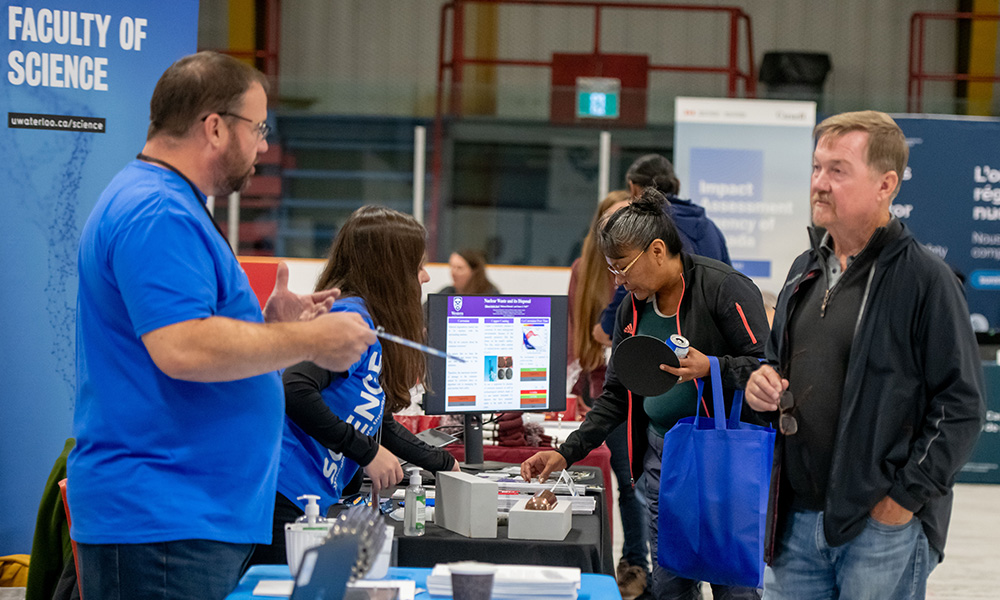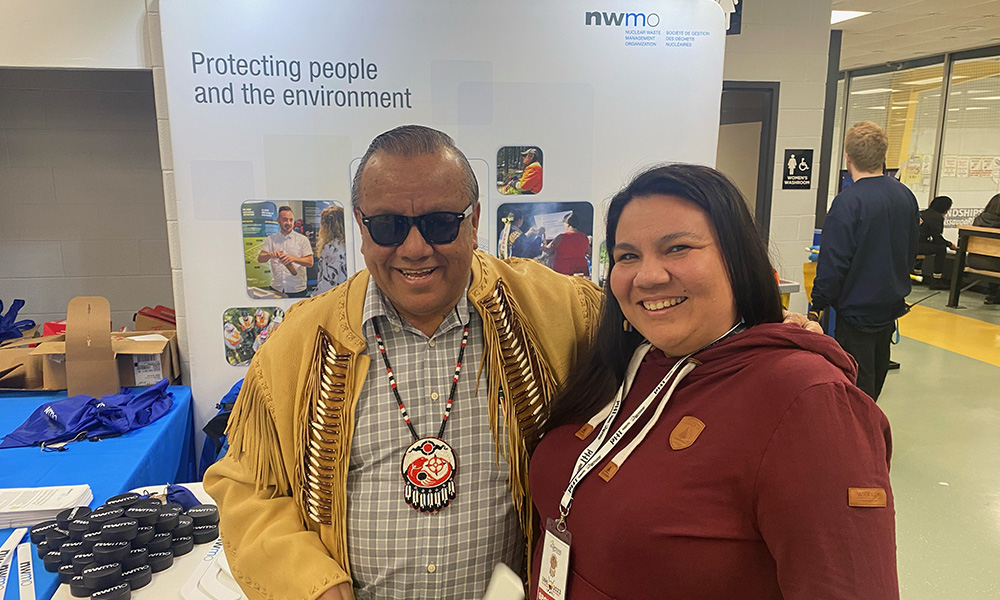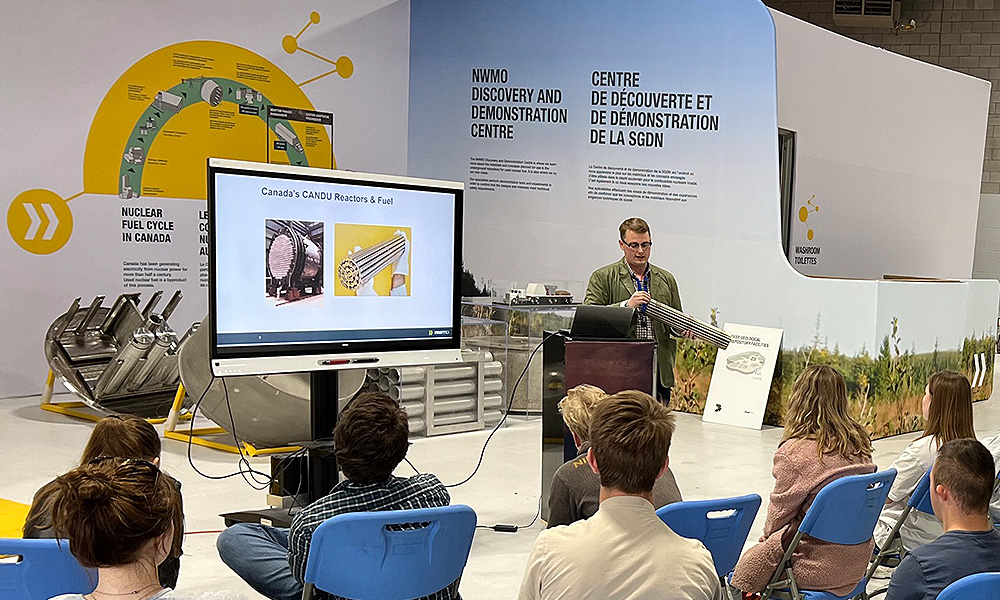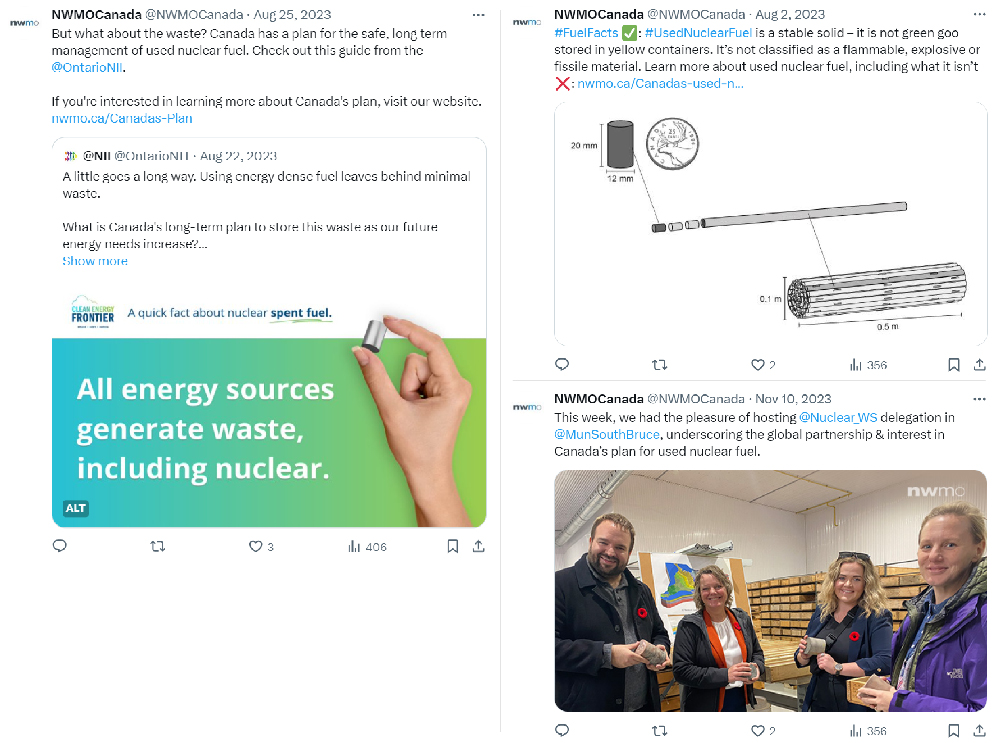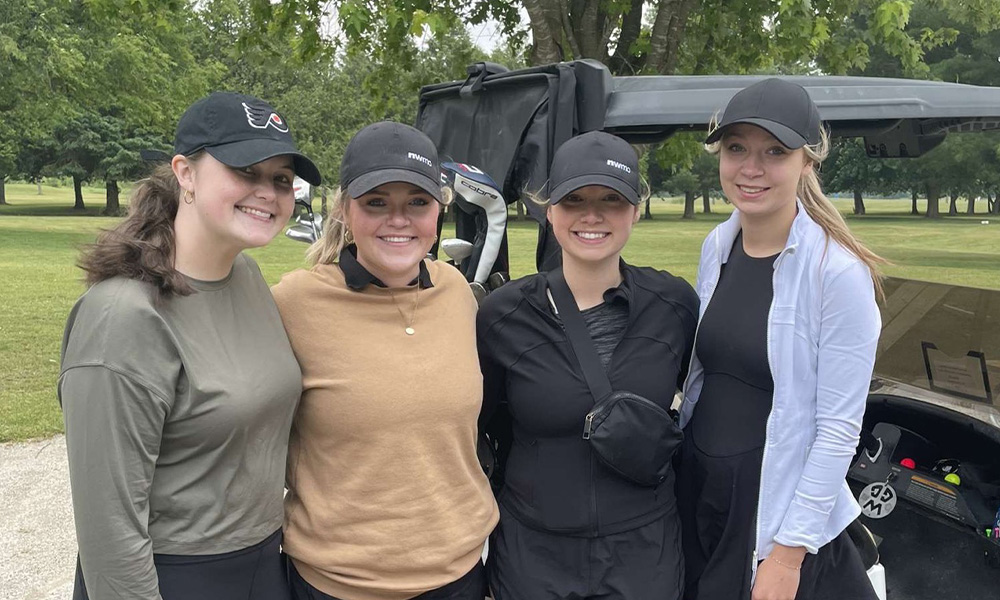Community engagement
Throughout the year, we continued helping members of the public understand our work, ask questions and provide feedback. Strong engagement with Canadians and Indigenous peoples was especially critical in 2023 as we move closer to selecting informed and willing hosts for Canada’s deep geological repository.
Connecting with our international counterparts was also a priority this year. We made an important investment in 2023 in organizing delegations of Canadians and Indigenous peoples — including members from both siting areas — to travel to Finland and tour what will be the world’s first deep geological repository for high-level nuclear waste. This experience provided community leaders and residents with a hands-on opportunity to learn about Finland’s project and its scientific process.
Delegations from Finland, Sweden and the United States also visited both potential siting areas here in Canada, to share experiences and learnings from their own site selection processes with local and regional community members. This was in addition to another visit welcoming experts from United Kingdom’s Nuclear Waste Services to discuss best practices in nuclear waste management.
Finally, we continued to foster our relationships not only with governments, but also with the nuclear industry and civil society organizations, including environmental and labour groups and think tanks. These initiatives will play an important part in building social acceptability for the project as we move closer to site selection and beyond.
Municipal engagement activities
NWMO staff engage with attendees at the Northwest Nuclear Exploration Event in the Township of Ignace.
As we move closer to site selection, we remain focused on ensuring municipalities understand the technical aspects and potential benefits of Canada’s plan. In 2023, we advanced negotiations around hosting agreements in both siting areas. The hosting agreements will detail the commitments made by the NWMO should the site be selected to host the project.
This progress was in addition to ongoing engagement with people in both areas. Two key events in 2023 were organized in close partnership with the siting areas’ municipalities and industry groups. With the NWMO’s support, the Municipality of South Bruce hosted the first-ever South Bruce Nuclear Exploration Forum, while the Township of Ignace hosted the Northwest Nuclear Exploration Event. These events brought together hundreds of attendees to learn more about safety, the environment, safe transportation, international experiences, Indigenous Knowledge, the project’s socio-economic impacts, regulations, the Integrated Strategy for Radioactive Waste (ISRW) and more.
In South Bruce, we designed and executed the South Bruce Doorstep Discussion Initiative — our first-ever door-to-door campaign to enhance our outreach efforts within the municipality. Over the course of the summer, we visited close to 1,000 residents, successfully increasing the NWMO’s visibility, building on existing relationships and beginning many new ones.
This achievement was in addition to a newly designed borehole tour experience in the Saugeen Ojibway Nation (SON)-South Bruce area. These tours successfully give interested community members a better sense of the area’s geology, the stability of the rock and the reality of what the repository could ultimately look like.
In the northwest, we purposefully expanded our engagement efforts outside our own Learn More Centre. This included holding several “Get to know the NWMO” sessions at various community venues. Many of these events featured third-party speakers, offering opportunities for community members to hear from experts outside the NWMO about the project and its potential benefits.
Our work this year was an important reminder that face-to-face conversations can drive stronger relationships and mutual understanding. Our first-ever doorstep initiative was a major success, allowing us to connect directly with more people in the community.
Engaging with people and organizations in this area, including critical voices, is essential in our consent-based siting process. We’re proud to keep finding new ways to answer important questions, address common misconceptions and share learnings about the project.
Indigenous engagement
Amy Ingram (right), Senior Liaison Advisor in Indigenous Relations at the NWMO, with Ontario Regional Chief Glen Hare, attend a Little Native Hockey League event.
As our work advances and we move closer to site selection, we continued to seek to understand how Canada’s plan for used nuclear fuel might benefit each region under consideration and be respectful of the rights of Indigenous peoples.
We actively engaged with Indigenous peoples and communities, both on and off reserve, to provide information about Canada’s plan throughout the year. This included hosting and attending community events, open houses, drop-in sessions, cultural gatherings, youth conferences, cultural awareness workshops, assemblies, conferences and special occasions.
In southern Ontario, we also continued our virtual home visits, an opportunity to build relationships with Indigenous peoples. This initiative began during the pandemic in 2020, and through it, we meet with groups or families virtually, sharing information with participants and giving them the opportunity to ask questions.
Through our work with First Nation and Métis communities, we continue to listen to concerns and learn what is important to community members, to understand how the project might benefit each region under consideration and to be respectful of the rights of Indigenous peoples. We are also aligning with Indigenous Knowledge in both technical safety and community well-being aspects of the site selection process.
The interests, concerns and counsel of Indigenous peoples are integral to the NWMO’s work. We are grateful to be able to engage with Indigenous peoples on a regular basis.
Listening to and learning from Indigenous peoples continues to be integral to our work at the NWMO. We are grateful for the opportunity to be present at community events and cultural celebrations and look forward to continued collaboration.
Youth engagement
Thomas Reilly, Senior Scientist in Safety Assessment at the NWMO, presents a nuclear fuel bundle to a GENESIS class from Sacred Heart High School in South Bruce as part of the NWMO Discovery and Demonstration Centre tour.
Our work is multi-generational, which means supporting the communities of tomorrow is a priority — including through youth-focused programs. With that in mind, we built on our long-standing connections with people under 35 in 2023.
Among residents in both siting areas, creating opportunities for young people to live and work where they grew up is top-of-mind. It is why we are actively investing in the workforce of tomorrow, especially by supporting education across a number of subjects, including science, technology, engineering and mathematics (STEM) learning.
In both siting areas, we continued to invest in educational programs that support youth skills in geology, environment, technology, media and Indigenous teachings. Much of this work focused on building transferable skills and training to equip community members to work at the eventual Centre of Expertise. We also supported learning about the nuclear industry and our work through visits to nuclear facilities and our Oakville Discovery and Demonstration Centre.
Our annual youth engagement report outlines the NWMO’s activities and educational initiatives, partnerships, sponsorships and donations. Engaging young people will continue to be a priority as we move closer to site selection and the years to follow.
Canada’s plan is multi-generational, and the work we do now to educate and engage youth will benefit us all in the years to come.
Digital engagement
Our digital channels have been an important tool for sharing information about the NWMO’s activities, announcements and engagement activities this year, along with those of our partners in Canada and around the world.
In 2023, we modernized our website to better engage our online community about our work, as well as enhance our cybersecurity. In addition, through our multiple social media channels, we connected with online community members, including in and around siting areas, about events, community initiatives and project information. Social media has remained a key channel for answering questions and addressing misinformation, and we continuously experiment with new formats of content to increase audience engagement.
By strengthening our efforts throughout 2023, we have increased our audience on social media and look forward to continuing to inform and engage with people who want to learn more about the NWMO’s work.
The NWMO was active on social media throughout 2023, sharing educational content about used nuclear fuel and Canada’s plan, and stories from siting area communities.
Giving back through sponsorships and donations
The NWMO was a title sponsor of the Big Brothers Big Sisters Golf Tournament in Wingham, Ont., where local youth participated with staff from our South Bruce team.
A core part of our work is ensuring that participation in the project fosters the long-term well-being of the siting areas. This came to life in 2023 through continued support for programs centred on education, environment, cultural initiatives and youth sports.
Sponsorship programs demonstrate our commitment to being a good corporate neighbour in and around the potential host communities. In fact, 2023 marked an increase in the number of local and regional initiatives that we supported when compared to recent years. Overall, we funded 114 local and regional initiatives that are directly supporting the well-being of Indigenous and municipal communities.
A notable new partnership was with Aboriginal Peoples Television Network (APTN), supporting its Indigenous Day Live Event. This new relationship also demonstrated our ongoing commitment to Reconciliation.
We also continued supporting the GENESIS program in the SON-South Bruce area, which provides hands-on experience in environmental studies to high-school students.
Key sponsorship agreements were also renewed with Right To Play Canada, Scientists in School, Shad Canada, the Gord Downie & Chanie Wenjack Fund, and Science North.
Several of these organizations’ activities reflect our interest in fostering a culture of science and in supporting youth pursuits in science and technology.
Government engagement
Fostering relationships with government — inside our borders and internationally — and ensuring they are up to date on project advancements is essential to building support for Canada’s plan.
As we prepare for site selection and the next steps in the regulatory decision-making process, we regularly engaged governments and municipal associations across Canada, so they can in turn make informed decisions.
In 2023, our strides on this front apply to Canada’s plan now and the NWMO’s evolving mandate. The strength of our efforts to build trust with government became clear this fall as the Minister of Energy and Natural Resources endorsed the NWMO’s recommendations in the Integrated Strategy for Radioactive Waste.
We continued to work closely with elected officials this year. Our notable co-operation agreements with other countries and progress on the Integrated Strategy for Radioactive Waste reflect our ongoing commitment to engagement.
Partnership
The NWMO follows a partnership road map that outlines how we are working closely with communities in each siting area to develop and refine the vision each one has for the project.
In 2023, our focus was on developing partnership agreements with potential host communities. These agreements outline roles, investments and expectations that we will have for each other once the site is selected. They also detail how we move forward together in the regulatory process.
Additionally, we made vital progress on planning the Centre of Expertise, a multimillion-dollar investment that will be designed in detail and constructed in the selected siting area. Regardless of which site is selected, the Centre of Expertise will be an anchor for the community.
Starting from the bottom and moving upwards, the road map guides our discussions about partnership with communities.
It will be home to active technical and social research, as well as technological demonstration programs, with contributions from scientists and other experts in a wide variety of disciplines from both the NWMO and around the world. An engineering test facility will be located within the Centre of Expertise to continue the development of materials and equipment to be used in the repository, and to support the construction and operation of the facility in the future.
Over the past year, we built momentum by developing the facility requirements and the contracting strategy for the Centre of Expertise, which will be an important landmark for local residents and visitors from around the world. In August, we published a report on the initial municipal visioning for the centre, summarizing the work completed with both siting areas over the past three years. That included online and in-person engagement and written input on the centre’s role in community well-being and its design, including feedback on the proposed architectural concept renderings. Communities will continue to be engaged throughout the design and other steps in the lead-up to the centre’s opening.

